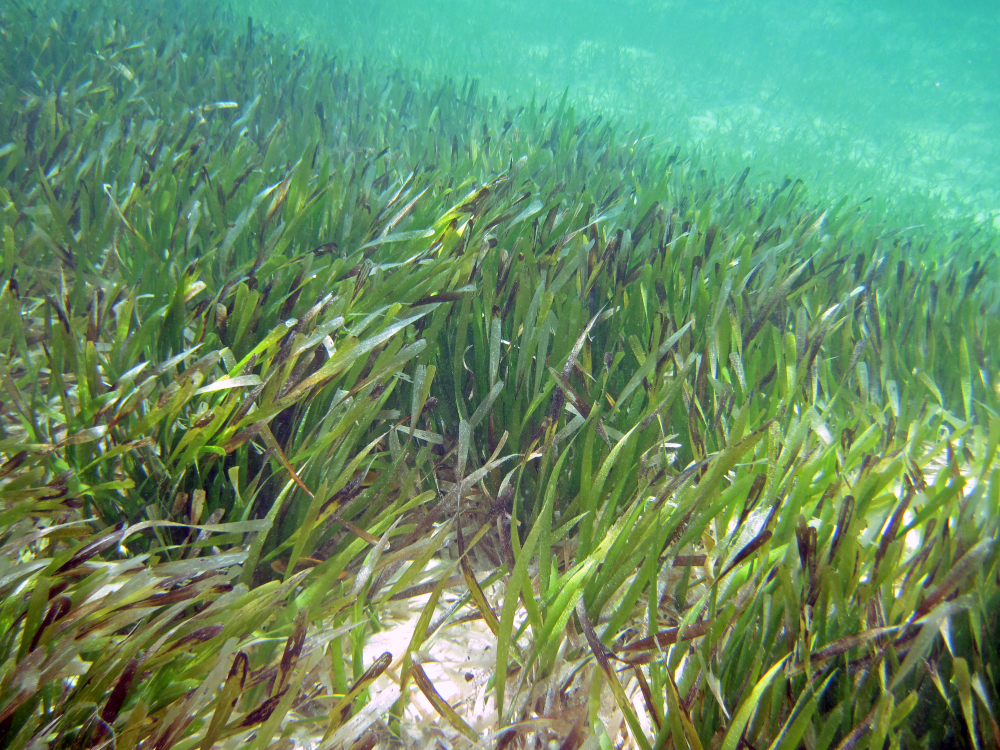We humans bloody love a flower. Sniffing them, looking at them, lopping them off and popping them in vase. On land there are flowers to be found everywhere, but in the ocean there’s only one kind of plant that produces blooms, and yes, they need pollinating.
ADVERTISEMENT
Seagrasses are the only true flowering plants that live in marine environments. Their flowers have adapted to carry out the function of any flower on land but with the added difficulty of being underwater. That’s because once upon a time they were terrestrial plants, but around 100 million years ago, they went for a dip and never came back out.
Why seagrasses have flowers
Now, seagrass meadows spread across the ocean, some representing the largest plant on the planet as they can be made up of an army of clones. Seagrasses can also be incredibly old, and in 2024 the world’s oldest known living marine plant was estimated to be 1,400 years old. Hell of a birthday for some greenery.
Seagrasses will only grow so deep as, like their terrestrial ancestors, they rely on photosynthesis to survive. Typically they appear like green grasses with their roots in the seabed, but every now and then some seagrass species go into bloom.
Seagrass pollination
Seagrass flowers are beautiful and some look remarkably similar to those on land. There was a time we thought underwater pollination was achieved exclusively through ocean currents, but we now know that – at least for some seagrass species – this is not the case.
Yes, the seas have their own bees (sometimes called idoteas, but more on this rhyming later). In 2016, a study provided experimental evidence that marine flowers can be pollinated by invertebrates. Like bees buzzing between plants, the flowers of the seagrass Thalassia testudinum are visited by microscopic crustaceans and marine worms.

Thalassia testudinum, also known as turtle seagrass.
These minute pollinators drop by to feed on some of the seagrass flowers’ delicious and nutritious pollen, but when they wriggle off to find another plant, some of that pollen sticks to them. That’s because the flower has evolved to release its pollen wrapped in mucilage – a substance that’s just as sticky as it sounds – and as the critters hop from flower to flower, they unwittingly pollinate the seagrass.
ADVERTISEMENT
These seagrasses could still pollinate through water currents alone, but the sea bees can encourage seagrass growth. Very handy considering, as the researchers noted, they’re among the most productive ecosystems in the world. “They improve water transparency, stabilize coastlines and store carbon, and also provide food and shelter to a diverse faunal community,” they wrote in Nature Communications.
The many sea bees
While the sea bees for Thalassia refer to a group of organisms, another was identified for algae: idoteas. These idoteas bees (I told you there’d be more rhyming) were found to be common among red algae and that their presence significantly boosted fertilization. They were able to confirm the connection by zooming in on the isopods showing their bodies sometimes picked up the seaweed’s spermatia like pollen sticking to a bee, which the idoteas could then deliver to the necessary reproductive parts by wandering over to female plants.
“The long-held belief that animal-mediated pollination is absent in the sea has recently been contradicted in seagrasses, motivating investigations of other marine phyla,” wrote the authors of the paper published in Science. “This discovery suggests that animal-mediated fertilization could have evolved independently in terrestrial and marine environments and raises the possibility of its emergence in the sea before plants moved ashore.”
Underwater flowers and adorable sea bees? I think I really would like to be under the sea in an octopus’s garden in the shade.
Source Link: There’s Only One Kind Of Flowering Plant Found In The Ocean, And It’s Beautiful